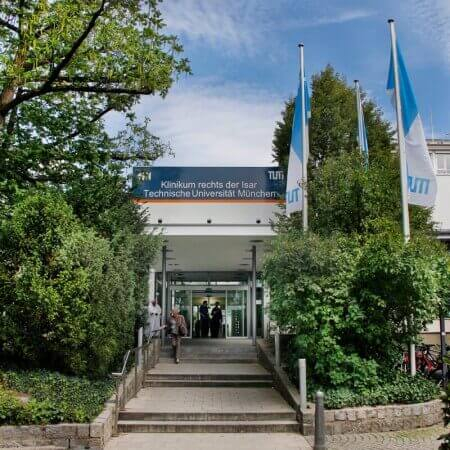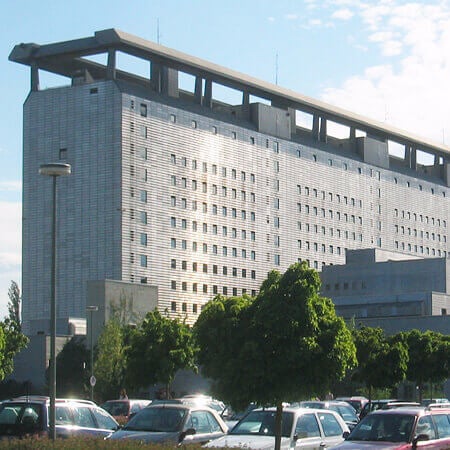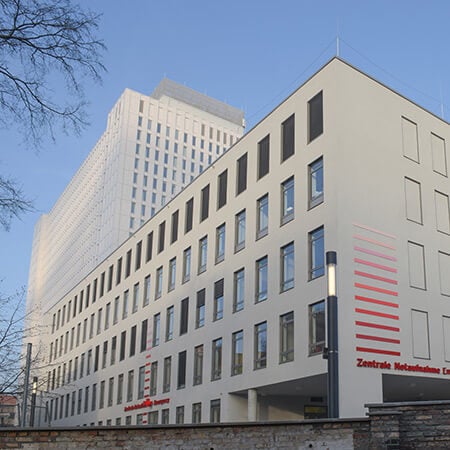About the disease
Polycystic kidney disease is a hereditary disease, in which kidney tissue is affected by multiple growing cysts of different sizes. The condition usually affects both kidneys. The lumps contain a jelly-like fluid resembling the colour of urine. Due to a reduced mass of functioning parenchyma, cyst growth causes kidney failure. Extrarenal polycystic kidney disease can also affect the surrounding tissues.
The cysts can be either closed or non-closed. The first ones look like closed sacs, which are not related to renal tubules and cannot fulfil the excretory function. These cysts are common for the smallest patients and have an unfavourable prognosis. The non-closed cysts look like dilated tubules and are connected to the renal pelvis. In these cysts the excretory function is partially preserved. This type is more common for older children and adults. The last ones are 10 times more likely to develop polycystic kidney disease than children.
Symptoms
- Compensated stage manifests almost no signs of the condition. A person will eventually experience pressure in the lower back, abdominal pain and headache. Kidney functions are performed adequately.
- Sub compensated stage is characterized by a gradual development of kidney failure, which manifests itself with high blood pressure and headaches. The cyst can develop suppuration that will cause renal colic, chills, intoxication and fever.
- Decompensated stage is characterised by the development of chronic uremia. In case of suppuration cysts can be also affected by urosepsis. A secondary infection, such as flu or acute respiratory viral infection (ARVI) can cause death.
Diagnosis
- Palpation can detect enlarged kidneys with an irregular nodular surface. Sometimes kidneys can be so large that they protrude, especially in children.
- Urine can contain red and white blood cells. The daily urinary output can be decreased.
- The levels of red blood cells are low, while the levels of creatinine and urea are increased.
- Ultrasound can detect enlarged kidneys with multiple cysts of different sizes and the use of contrast agents can determine the areas of the organ which lack blood vessels.
Treatment
- At the initial stage doctors prescribe painkillers to subside infectious processes, which are common for this diagnosis, as well as antihypertensive drugs.
- Endoscopic resection is recommended if the treatment of polycystic kidney disease is ineffective and pains do not disappear. The surgery aims to remove the contents of large cysts, but it cannot prevent their development in the future. Surgical treatment of polycystic kidney disease is performed percutaneously and thus suppuration and severe pain can be avoided. Cyst incision results in the reduced kidney size and improved blood circulation. In exceptional cases a surgeon can also remove a suppurating kidney but only if the second one, which is also affected by polycystic kidney disease, can fulfil the excretory functions. If the condition is accompanied by pyelonephritis, the doctor will prescribe antibiotics. In terminal stages patients need artificial blood filtration and transplantation of their nonfunctional organ.
Authors:
This article was edited by medical experts, board-certified doctors Dr. Nadezhda Ivanisova, and Dr. Bohdan Mykhalniuk. For the treatment of the conditions referred to in the article, you must consult a doctor; the information in the article is not intended for self-medication!
Our editorial policy, which details our commitment to accuracy and transparency, is available here. Click this link to review our policies.
















